

Andrei Stackenschneider (named spelled variously)Brumfield says of this architect: "Although the post neoclassical era witnessed the displacement of the imperial design in architecture by an eclecticism directed by other economic and social forces, the reign of Nicholas also initiated the last major phase of palace construction in Petersburg. The architect who directed the undertaking, Andrei Shtakenshneider, lacked the genius of the great imperial architects of the preceding century, but he skillfully exploited the possibilities of eclecticism to produce a blend of the neo-Renaissance and neo-baroque" (406). Two of his palaces in St. Petersburg are on this web site:the Nikolaevsky Palace and the Mariinsky Palace.This palace was built for Grand Duke Nikolai Nikolaevich, brother of Alexander II. Like his Mariinsky Palace, it has broad horizontality emphasized by clearly defined bays. It too has a central entrance porch and projecting flanking pavilions. However, its horizontality is even more pronounced because the registers are outlined by cornices and horizontal divisions. It seems more graceful than the Mariinsky Palace, partly because it has more decorative details and uses color along with carved details (or stucco?). This palace is located in a square near the bridge linking the Admiralty precinct with Vasilievsky Island. | ||
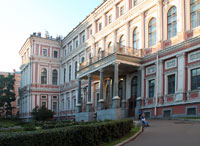 |
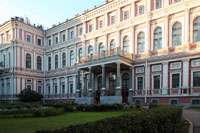 |
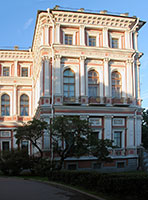 |
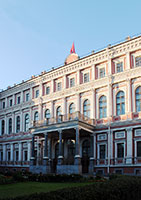 > > |
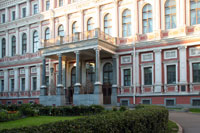 |
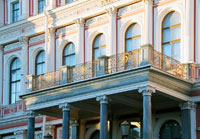 |
The ground floor/ basement? entrance |
 |
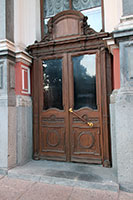 |
One of the end pavilionsThe three storeys are demarcated by elaborate cornices on the wall surface and the piano nobile/bel etage is emphasized by these cornices, by its larger size, by the elaborate windows, and by elaborate moldings both above and below the arched windows. The emphasis on this important floor on the exterior is characteristic of renaissance palaces. | ||
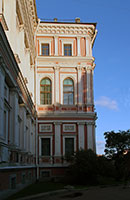 |
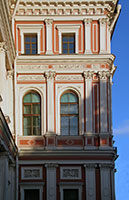 |
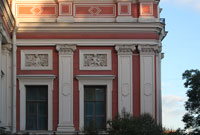 |
 |
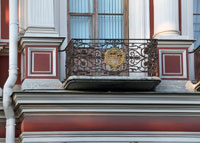 |
Second floor balcony on the piano nobile/bel etage |
 Click here to return to index of art historical sites.
Click here to return to index of art historical sites.
 Click here to return to index of artists and architects.
Click here to return to index of artists and architects.
 Click here to return to chronological index.
Click here to return to chronological index.
 Click here to see the home page of Bluffton University.
Click here to see the home page of Bluffton University.

